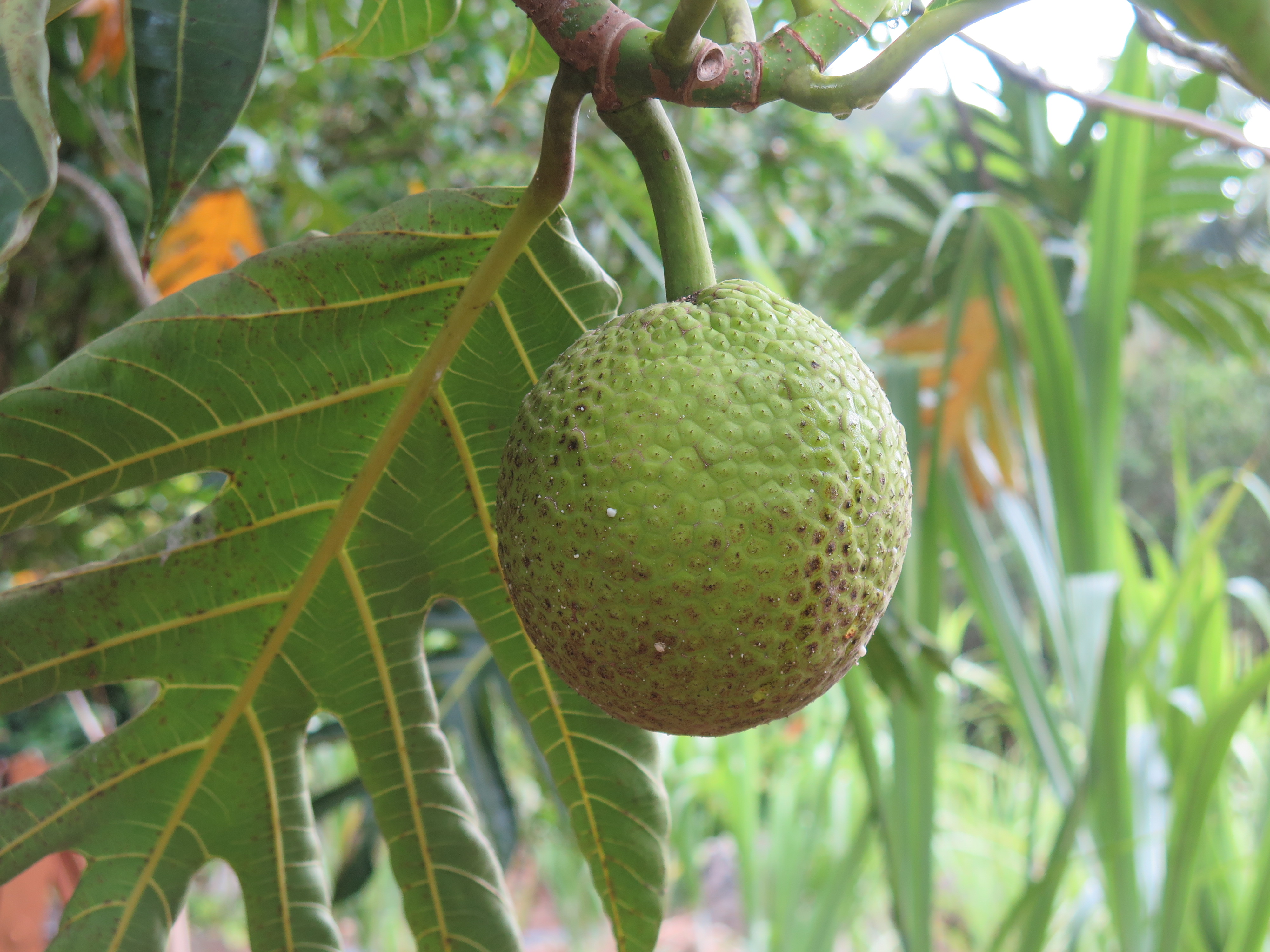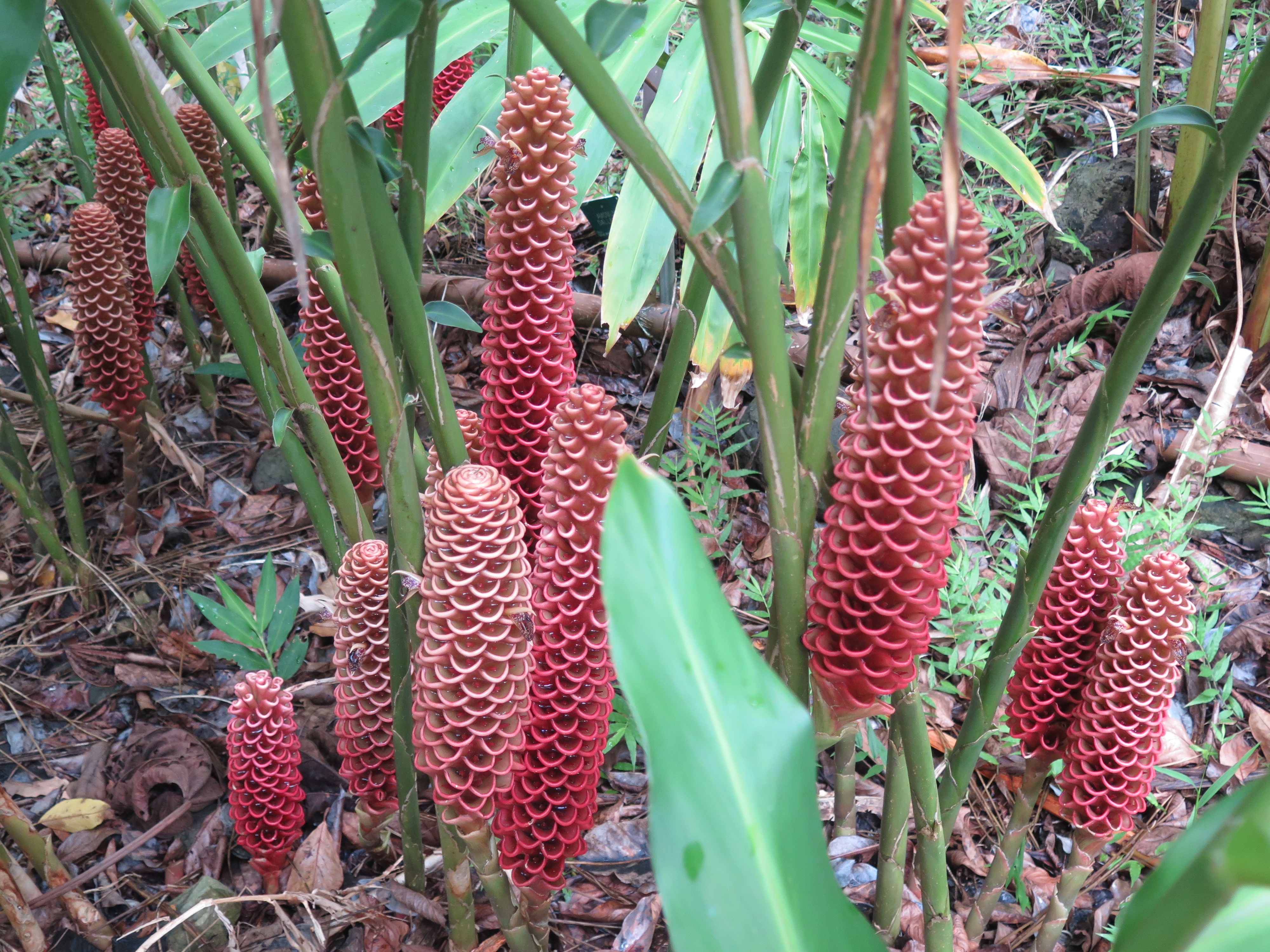We hired a car today from a small car hire place down the road from the hotel. There is no digital or photographic record of this car as I have destroyed them all. The reason? The car was a white Fiat 500 with red and green go-faster stripes on it. Possibly the most mis-named stripes as all the Kings Horses and all the Kings Men would not make it go faster! So, the fact that I had to drive this car will henceforth be forgotten. Suffice it to say – it was the cheapest car available ….
We hired the car to make a trek across to the west coast of Oahu and see some more of the island. Confusingly the people here seem to call this part of the island the North Shore, though they seem to only manage about two points of the compass, as there only seems to be North Shore and South Shore in their vocabulary. Anyway, we drove west to a place called Waimea Valley.
The valley is a botanical garden, but also a sacred site for the local people. As well as all the plants there are various historical structures including fish ponds, graves, pens for animals as well as various shrines. This was all during the time of the Hawaiian monarchy and with its rich volcanic soil and high levels of rainfall, the valley was an important farming site for the elite of the island. They cultivated taro (for its edible corms), sweet potato and bananas and new crops were introduced by visiting Europeans.
The range of plants in the garden was amazing. From the first tree we saw – the aptly named cannonball tree – we were amazed by the range and variety of flowers and fruits. One of the fruits was the breadfruit (Artocarpus altilis). This is a member of the fig family. It bears prickly, yellow-green, football-sized fruits which were first discovered by Europeans in 1769 when Captain Cook arrived in Tahiti. With him was the botanist Joseph Banks, who realised that breadfruit could be a potential source of cheap and nutritious food for slaves on the sugar plantations of the British West Indies. Banks persuaded King George III that this was a good idea and Bligh was tasked to lead the breadfruit-gathering expedition. The rest as they say is history …..

Other plants included jack fruits (which can grow to up to 80lbs), macadamia nuts, bananas and a huge range of ginger plants including the quite boring looking ginger plant (Zingiber officinale) as well as some showy flowering gingers including torch ginger. As well as these there was a huge range of palms and other trees from all around the tropical world.
At the head of the valley walk was a waterfall – another sacred site, though given it was full of people swimming and posing for the perfect Instagram shot, you could be forgiven for not realising this. Freshwater was central to the ancient Hawaiian system of land division in ahupua’a, parcels of land extending from uka (uplands) to kai (sea). The name of the valley – Waimea – means “reddish water” and this stems from the high levels of iron oxide in the volcanic soil. The Hawaiians believed this reddish water to have healing properties and so would bathe in it.
We saw lots of interesting birds while wandering around as well. These included shama thrush, Java finch, Japanese white-eye, the common myna, cattle egrets and red-crested cardinals.

On the way back we stopped at Pearl Harbour. This was the site of the surprise Japanese attack on the US on December 7th 1941 – the attack which brought the Americans into World War II. The base was attacked by 353 Japanese aircraft. All eight U.S. Navy battleships which were there were damaged, with four sunk. All but USS Arizona were later raised, and six were returned to service and went on to fight in the war. The site where the USS Arizona sunk now has a memorial over it, but we didn’t have time to do the boat trip across there before we had to get the car back, so we just had a quick look round.
